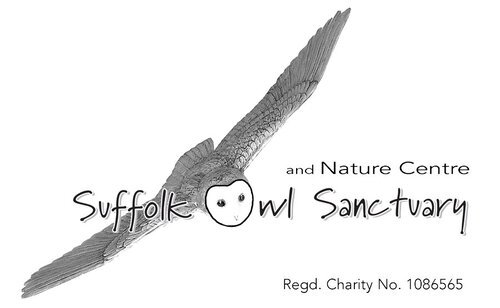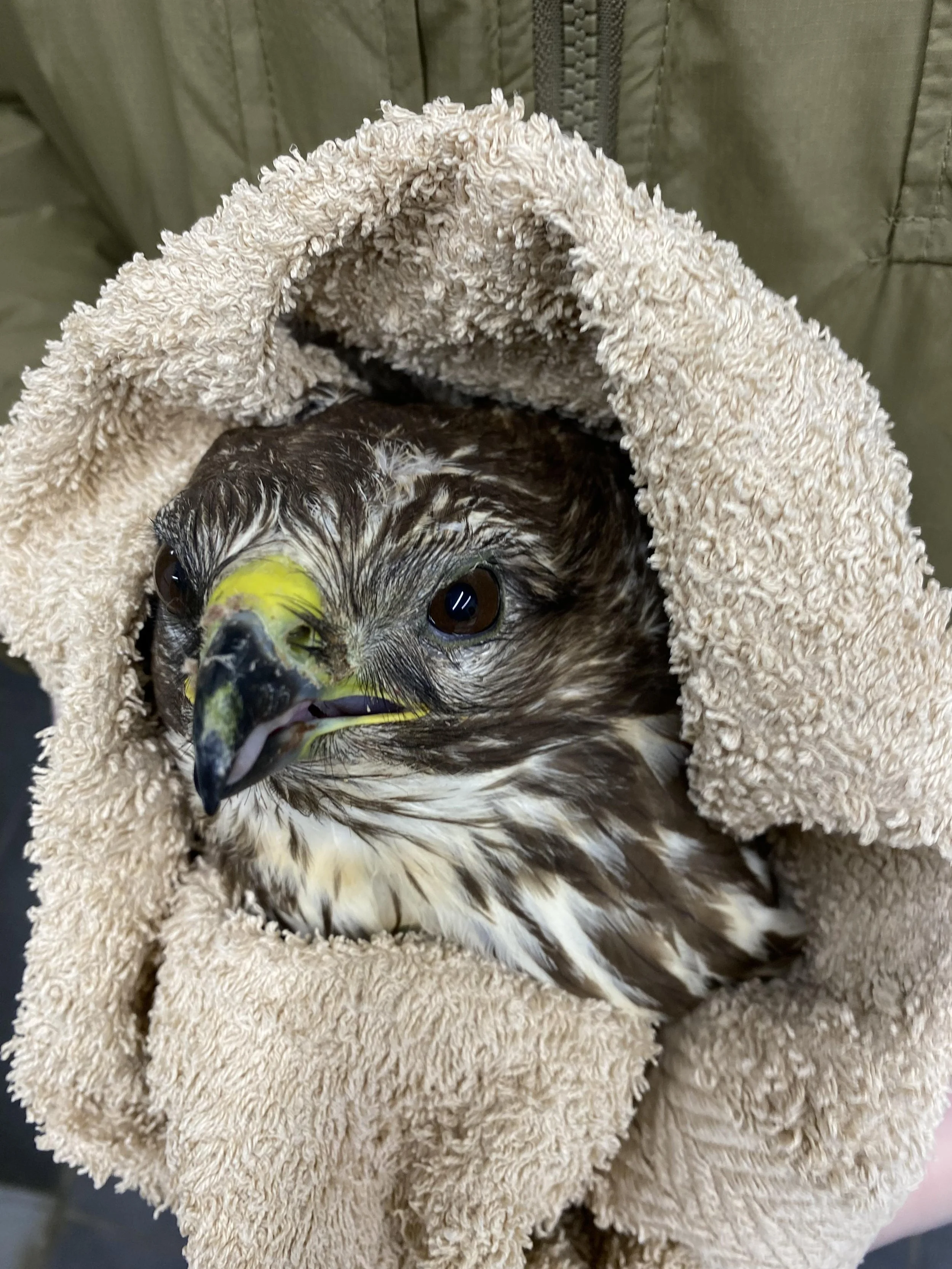Last week we received a call from a local vets. They had received a Buzzard that was hit by a car and needed a rehabilitation facility for it to go to. We were pleased to step in and arranged for them to drop the bird off.
Upon admission to us, it was evident that the bird had a severe head trauma, with the right eye completely hidden under swelling. The vets had prescribed a course of antibiotics and we applied special drops which help with eye injuries.
Within 24 hours, the right eye was almost back to normal, with only a slight swelling still visible. The bird was very perky and devoured all the food it was presented with! We nicknamed him Mucky due to his ability to get food EVERYWHERE - on his face, feet, wing feathers, tail, and all over the Hospital cage!
A big positive for us was that a few days after it was taken to the vets, the vet nurse student who helped with the initial admission was visiting us as part of their course. We gave them a behind the scenes tour of the hospital and allowed them to peek into the cage containing this Buzzard. They announced “that must be a different bird, the one we had looked like it had lost an eye!” - just goes to show how quickly birds can sometimes recover with the correct treatment!
Unfortunately, the bird had an added complication in that the accident had caused several of his primaries (main flight feathers) to become damaged and break. We tested his ability to get around in one of our outdoor aviaries and he really struggled to get up to the perches, spending most of the day on the ground. Birds of prey will only regrow 2-4 feathers a year, so we didn’t want to have to keep him long term, as he was very keen to go.
The team used a falconry technique called imping to replace the broken feathers with undamaged feathers. These were either moulted by our own birds or removed from hospital birds that have unfortunately passed away. We always try and keep any suitable feathers for just such an occasion.
This process involves cutting the damaged feather just above the broken tip of the shaft, and lining this up with the replacement feather, which is neatly trimmed to fill the gap. A solid rod (usually a thin slither of wood similar to a cocktail stick) is then inserted which sits partially in the old feather and gives something to attach the new feather to. A small amount of adhesive is used to fix the new feather in place.
Usually this process is very straight forward, but the Buzzard managed to dislodge two of the replacement feathers once he was placed into an aviary to test his flight. He will have these replaced again before release.


